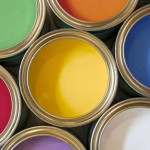 Air Exchanger Basics
Air Exchanger Basics
With the emphasis on energy conservation and efficiency, new home construction can create a problem of indoor air pollution. Vapor barriers, thermal windows, weather-stripping and caulk have reduced or stopped fresh air from infiltrating and replacing stale air. Entering and exiting the house through doors isn’t always enough air changes. Cooking, aerosol sprays, cleaning agents, paints, and in some cases excess humidity if the house is sealed too tightly can create an undesirable environment. Keeping windows or doors open does not conserve energy. A device known as an air-to-air exchanger is used to recover heating or cooling and improve air quality.
There are many different designs of air exchangers, depending on the manufacturer, but the principle is the same. Fresh air is drawn in from a port open to the outside of the building, and passed through a chamber, also know as the exchanger, that is surrounded by indoor air. Highly conductive metal or other materials removes the energy (heat) from the warmer air and gives it to the cooler air. The fresh air is then ducted into the house, and the indoor air is ducted to a port and expelled outside.
 Perma-Cote’s coated aluminum has been used in many industries where corrosion is a factor. Electrical systems for such industries as oil, mining, waste water, or petro chemical have very specific needs. Using PVC coated conduit allows for such systems to function properly and safely. Standard PVC tubing was the product of choice until manufacturers realized they did not last as long as steel or aluminum would, but those metals would corrode too easily. Using liquid PVC along with other chemical processes allows for the coated aluminum to withstand the corrosive environments while at the same time protecting the electrical system.
Perma-Cote’s coated aluminum has been used in many industries where corrosion is a factor. Electrical systems for such industries as oil, mining, waste water, or petro chemical have very specific needs. Using PVC coated conduit allows for such systems to function properly and safely. Standard PVC tubing was the product of choice until manufacturers realized they did not last as long as steel or aluminum would, but those metals would corrode too easily. Using liquid PVC along with other chemical processes allows for the coated aluminum to withstand the corrosive environments while at the same time protecting the electrical system.
 UV air filters create clean air by exposing it to UV light. A fan draws contaminated air into a UV chamber and pumps out fresh, clean air free of harmful impurities such as mold and bacteria. UV air filters are extremely helpful in areas prone to airborne pathogens such as those found in bathrooms and kitchens.
UV air filters create clean air by exposing it to UV light. A fan draws contaminated air into a UV chamber and pumps out fresh, clean air free of harmful impurities such as mold and bacteria. UV air filters are extremely helpful in areas prone to airborne pathogens such as those found in bathrooms and kitchens.
The Importance of Clean Air
The act of breathing is a function that we normally don’t think twice about. However, our lungs and the air we breathe are the gateways to health and well-being. We have little control over the air we breathe outdoors, but what about the air you breathe all day in your home or office?
No matter how clean your home is, indoor air is contaminated with harmful elements such as black mold spores, pet dander, pollen, dust, and other elements that can cause chronic illness. Installing UV air systems into your home or office can eliminate these threats and improve you and your family’s health.
Research has proven that UV air filtration in your home or office eliminate 99% of harmful bacteria. Inquire today about installing a UV air system in your home or office.
 According to the EPA, the air inside a home is, on average, two-to-five-times more polluted than the air outside. Paint is a large contributing factor to poor indoor air quality and can emit harmful chemicals, such as VOCs, for years after application. Read more
According to the EPA, the air inside a home is, on average, two-to-five-times more polluted than the air outside. Paint is a large contributing factor to poor indoor air quality and can emit harmful chemicals, such as VOCs, for years after application. Read more
 The Benefits of Formaldehyde-free Insulation Formaldehyde-free insulation is the right thing for the environment and your home.Better for the Environment
The Benefits of Formaldehyde-free Insulation Formaldehyde-free insulation is the right thing for the environment and your home.Better for the Environment
Formaldehyde-free insulation means a better smelling home, and less formaldehyde in the air.